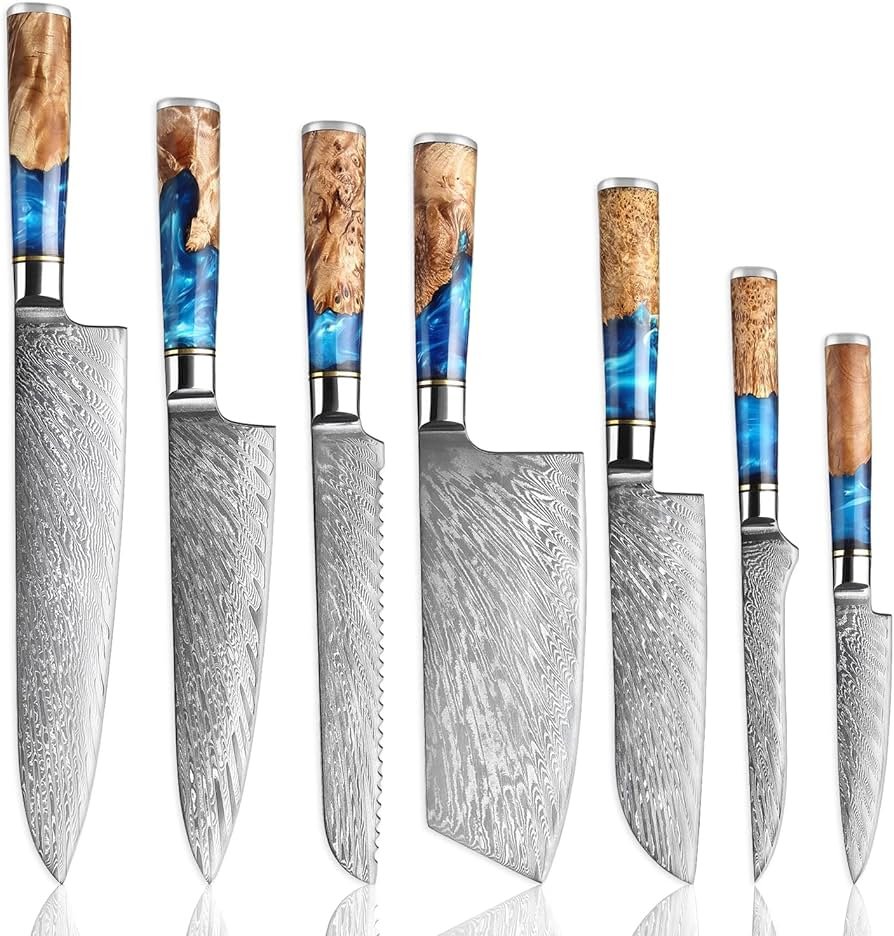A kitchen knife set is an essential investment for any home cook or professional chef. With the right set, you can tackle a wide range of kitchen tasks efficiently and with precision. However, with the plethora of options available, choosing the perfect kitchen knives can be overwhelming. For people who spend a good amount of time in the kitchen, having access to the right blades will be very important.
When buying a kitchen knife set, you need to make sure the set has all the knives you need. Also, different people, depending on their kitchen proficiency, will require different knives. Additionally, contrary to popular belief, sharper knives are actually safer in the kitchen as they will require much less effort and jostling to cut or chop ingredients.
To help you make an informed decision, here are seven crucial factors to consider when buying a kitchen knife set.
1: Consider Your Cooking Style and Knife Needs
The first and most critical consideration is your cooking style and needs. Think about the types of meals you prepare regularly. Do you enjoy slicing and dicing, or are you more focused on butchering meats and filleting fish? The knife set you choose should align with the tasks you perform frequently. Common knives in a set may include a chef’s knife, a bread knife, a utility knife, a paring knife, and more specialized options like a boning knife or Santoku knife.
There is simply no single kitchen knife that will fit all requirements. Different blade lengths, sizes, and handle types will be useful in preparing different foods and ingredients.
2: Pay Attention to Knife Material
The material of the knives affects their sharpness, durability, and ease of maintenance. There are two primary materials used for kitchen knives:
- Stainless Steel: This is a popular choice due to its rust resistance and durability. Look for knives made from high-carbon stainless steel for better edge retention and sharpness.
- Carbon Steel: Carbon steel knives are known for their sharpness and easy maintenance. However, they are prone to rust and require regular cleaning and drying.
The best choice depends on your preference and willingness to maintain the knives properly. Some sets combine both stainless and carbon steel for a balance of sharpness and rust resistance.
3: Material and Type of Knife Handle
The handle of a knife significantly influences your comfort and control when using it. There are various handle materials, including wood, plastic, and composite materials. Consider the following:
- Comfort: The handle should fit comfortably in your hand, and you should be able to grip it securely. It’s a personal choice, so try holding the knives before purchasing if possible.
- Balance: A well-balanced knife feels more natural to use and reduces fatigue during extended food preparation.
- Maintenance: Consider the ease of cleaning and whether the handle material is prone to discoloration or damage.
Also, selecting the right type of handle size will depend on personal preferences as well. People with smaller hands will do well with smaller handles. Folks with bigger hands will want something heftier.
4: Knife Blade Sharpness and Edge Retention
The sharpness and edge retention of the knives are essential for efficient cutting. Look for knives with a sharp edge and a good level of edge retention, so you don’t need to sharpen them frequently. High-carbon stainless steel knives often offer a balance between sharpness and edge retention, but some knife sets come with blades that have been precision-sharpened.
5: Necessary Maintenance for Your Kitchen Knife Set
The maintenance requirements of the knife set should align with your willingness and ability to care for them. Some knives, like carbon steel, require more attention to prevent rust, while stainless steel knives are more forgiving. Additionally, consider whether the knife set comes with a honing rod or sharpening stone, as these tools are necessary to maintain the sharpness of your blades over time.
6: Store Your Knife Efficiently to Keep Its Sharpness for Longer
Proper storage is crucial to keep your knives safe and maintain their sharpness. Some kitchen knife sets come with a storage block, while others offer options like magnetic strips or blade guards. Consider your kitchen space and the available storage solutions to ensure that your knives are kept in a way that maintains their condition and safety.
7: Consider Your Price and Budget
Knife sets come in a wide range of price points, and your budget is a significant factor to consider. Quality knife sets can be an investment. But it’s essential to find a set that provides the features and materials you need while fitting within your budget. Be wary of extremely cheap sets, as they may not offer the durability and performance you require.
Some Important Additional Considerations
- Brand and Reputation: Research knife brands and read reviews to ensure you purchase from reputable manufacturers known for producing high-quality kitchen knives.
- Warranty: Check if the knife set comes with a warranty. A good warranty can provide peace of mind in case of any manufacturing defects.
- Number of Pieces: Evaluate the number of knives in the set. Some sets come with a dozen or more knives, while others offer a more basic selection. Be sure to choose a set that provides the knives you’ll use regularly.
- Special Features: Some knife sets come with additional features, such as kitchen shears, steak knives, or a knife sharpener. Assess whether these extras are valuable to you and your cooking needs.
Conclusion
Selecting the right kitchen knife set is a decision that can significantly impact your culinary experience. Chefs will need high-grade Damascus chef knife sets to make their jobs easier. By considering your cooking style, knife material, handle comfort, sharpness, maintenance, storage options, and budget, you can make an informed choice that meets your needs and provides you with the essential tools for the kitchen. Whether you’re a novice cook or a seasoned chef, a well-chosen kitchen knife set can elevate your cooking and food preparation to a new level of efficiency and precision.







